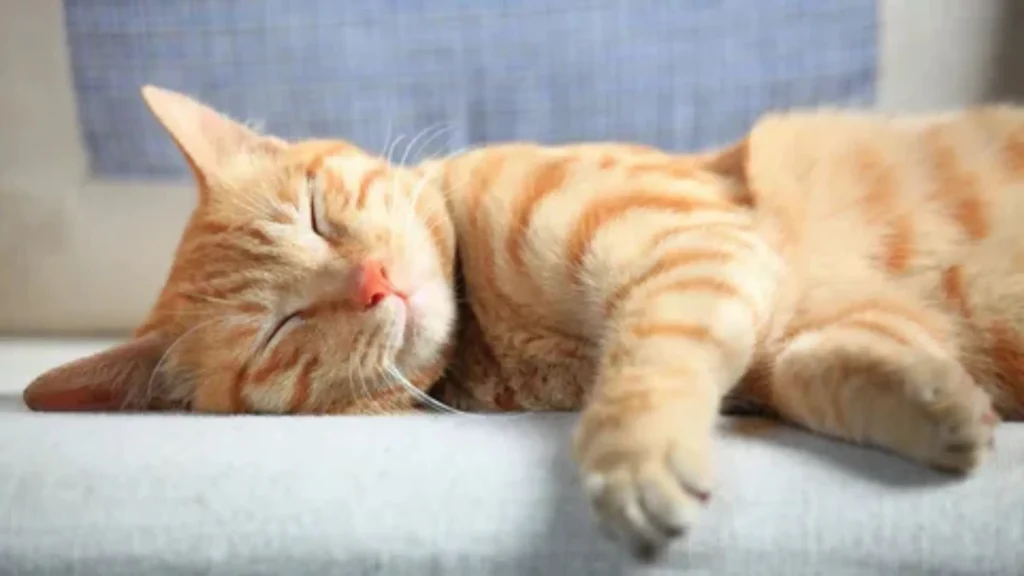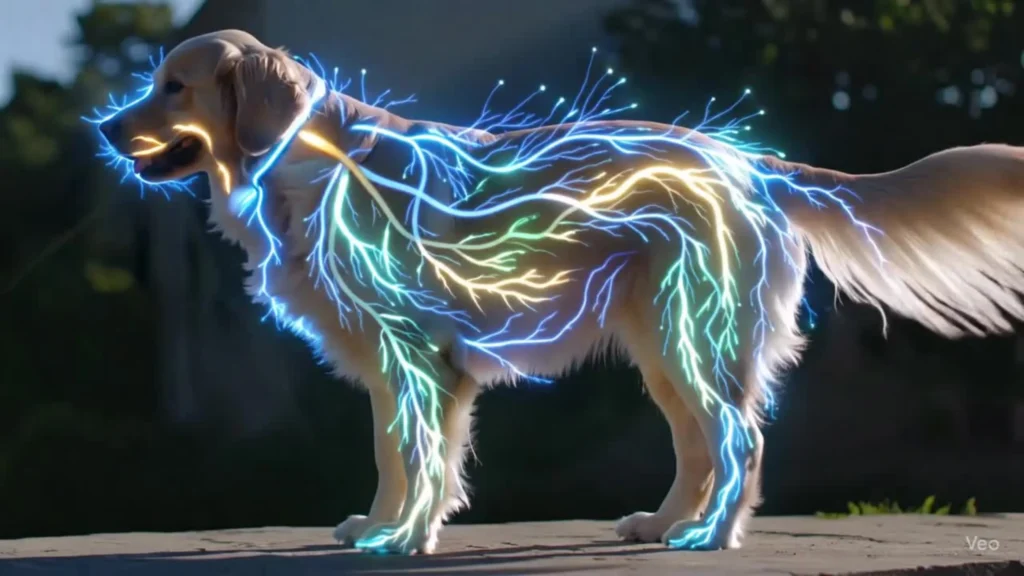Pet sleeping positions, what they reveal, can tell you a lot about your furry friends.
Ever wondered why your dog sleeps like a pretzel or your cat curls up so tightly?
In this article, we’ll dive into the importance of those quirky positions and what they mean for your pet’s well-being.
Get ready to explore the cozy world of pet sleep!
Major Points to Remember
- Your pet’s sleep position shows how they feel.
- Curled up means they want to stay warm and safe.
- Sleeping on their side shows relaxation and trust.
- If they sleep on their back, they feel super secure.
- A stretched-out position means they are cool and confident.

Understanding Pet Sleeping Positions: What They Reveal About Your Furry Friends
Have you ever caught your dog or cat snoozing in a funny position and wondered what it means?
Just like humans, pets have their own unique ways of sleeping.
Their positions can tell us a lot about their mood, comfort, and even their health.
By paying attention to how your furry friend curls up, sprawls out, or even burrows under blankets, you can gain some valuable insights into their world.
Let’s dive into the fascinating realm of pet sleeping positions and what they might reveal about your beloved companions.
The Importance of Pet Sleeping Positions: Why It Matters
So, why should you care about how your pet sleeps? Well, their sleeping positions can be a window into their emotional state and overall well-being. Just think about it – if you’re feeling anxious or unwell, your sleeping habits might change, right? The same goes for pets!
When your pet sleeps comfortably, it’s a good sign that they feel safe and secure in their environment.
On the flip side, if they’re constantly changing positions or seem restless, it might be worth investigating.
Are they experiencing discomfort?
Is something bothering them?
Keeping an eye on these behaviors can help you understand their needs better.
For more on recognizing signs of discomfort in pets, consider exploring expert tips for dealing with accidents.
Plus, knowing your pet’s sleeping habits can also help you create a more comfortable sleeping space for them. After all, a well-rested pet is a happy pet!
Common Pet Sleeping Positions and What They Mean
Let’s break down some of the most common sleeping positions and what they might indicate about your furry friend.
- Curled Up: This classic position for both dogs and cats indicates they’re trying to conserve body heat and protect their vital organs. It’s a cozy, safe position that shows they feel secure.
- On Their Side: If your pet is sprawled out on their side, they’re likely in a deep sleep and feeling very relaxed. This position shows that they trust their surroundings and feel comfortable enough to let their guard down.
- Stomach Sleeping: Some pets prefer to sleep on their stomachs with their legs tucked underneath them. This position can indicate they’re alert and ready to spring into action if needed. It’s also common for puppies and kittens still learning about their world.
- Back Sleeping: When your pet lies on their back with their belly exposed, it’s a sign of total comfort. They feel safe and secure enough to show their vulnerable side. Just be careful – this position can also mean they’re in a playful mood and might be ready for some belly rubs!
- Burrowing: If your pet loves to dig into blankets or burrow under pillows, it’s a sign of seeking warmth and security. This behavior is often seen in smaller breeds and can also be a natural instinct from their wild ancestors.
- Paw Over Face: You might see your pet sleeping with a paw draped over their face. This position can indicate they’re feeling shy or need a bit of privacy while they snooze.

Summary
Dog Sleeping Positions Meaning: What Your Dog is Trying to Tell You
Dogs are known for their unique sleeping styles, and each position can tell a different story. Here are some common dog sleeping positions and what they might mean:
- The Lion’s Pose: If your dog sleeps with their front paws stretched out in front of them and their head resting on the ground, they’re likely in a light sleep, ready to jump into action if needed.
- The Fetal Position: When your dog curls up tightly, it can indicate they’re feeling insecure or cold. This is often seen in rescue dogs or those who have had a rough past. For insights on improving your dog’s emotional well-being, check out how dogs improve your life.
- The Side Sleeper: Just like humans, many dogs love to sleep on their sides. This position shows that they’re comfortable and trust their environment. If your dog is a side sleeper, you can rest easy knowing they feel safe with you.
- The Sprawler: Some dogs love to take up as much space as possible while sleeping. If your dog sprawls out on their back with their legs in the air, it’s a clear sign they’re relaxed and confident in their surroundings.
- The Watchdog: If your dog sleeps with their head resting on their paws or with one eye open, they’re likely in a light sleep and ready to protect their territory. This position is common in breeds that are naturally alert and protective.
Cat Sleeping Behavior Insights: Decoding Your Cat’s Sleep Style
Cats are fascinating creatures, and their sleeping habits are no exception. Here’s a look at some common cat sleeping positions and what they might reveal:
- The Cuddle Bug: If your cat loves to curl up next to you or snuggle with other pets, it’s a sign they feel safe and secure. Cats are social animals, and this behavior shows they trust you.
- The Loaf: When your cat sits in a loaf position, with their paws tucked under their body, it means they’re relaxed but still alert. This is common for cats who are keeping an eye on their surroundings.
- The Side Sleeper: Just like dogs, many cats enjoy sleeping on their sides. This position indicates they’re comfortable and at ease in their environment.
- The Belly Up: If your cat sleeps with their belly exposed, they’re feeling confident and secure. Just like with dogs, this position shows they trust you completely.
- The Burrower: Cats love to hide and burrow. If you find your feline friend tucked away in a cozy spot, it’s their way of seeking warmth and security.
Neakasa M1 Open-Top Self Cleaning Cat Litter Box, Automatic Cat Litter Box with APP Control, Odor-Free Waste Disposal Includes Trash Bags
If you’re curious about the Neakasa M1, click here to buy and its standout features, you’ve come to the right place! This innovative product has been making waves for its cutting-edge design and top-tier performance. Whether you’re looking for efficiency, durability, or smart functionality, the Neakasa M1 delivers on all fronts.
For a detailed review, including pros, cons, and real-world performance insights, check out our in-depth analysis here: Neakasa M1 Review – Is It Worth It?.
Stay ahead of the curve and discover why the Neakasa M1 might just be the perfect addition to your tech collection!
Pet Body Language Sleep: Recognizing Comfort and Security
Understanding your pet’s body language while they sleep is crucial for recognizing their comfort levels. Here are some signs to look for:
- Relaxed Body: If your pet’s muscles are relaxed and they’re not twitching or moving around too much, it’s a good sign they’re in a deep, restful sleep.
- Soft Breathing: Listen for soft, even breathing. If your pet is breathing deeply and steadily, it means they’re comfortable and content.
- No Signs of Stress: If your pet is sleeping peacefully without any signs of stress (like whining, growling, or twitching), you can rest assured they feel secure.
- Position Changes: If your pet frequently changes positions during sleep, it could indicate discomfort or restlessness. Pay attention to these changes and consider consulting with a vet if they persist. For guidance on pet health, refer to the ultimate guide for dog emergencies.
Animal Sleeping Habits Interpretation: How Different Pets Sleep
Different animals have their own unique sleeping habits. Here’s a quick look at how various pets sleep:
- Rabbits: These little furballs often sleep with their eyes half-closed. They can be quite alert even while resting, so don’t be surprised if they perk up at the slightest noise.
- Guinea Pigs: Guinea pigs tend to sleep in short bursts throughout the day. They often snuggle together for warmth and security.
- Birds: Birds will often sleep while perched on one leg, tucking the other leg up under their feathers. This helps them maintain balance and stay alert.
- Ferrets: Ferrets are known for their playful nature, but they can also sleep a lot! They often sleep in curled-up positions, indicating they feel safe.
Understanding Pet Comfort Levels Through Their Sleeping Posture
Your pet’s sleeping posture can give you a lot of clues about how comfortable they are. Here are some things to consider:
- Cozy Spaces: If your pet seeks out cozy spots to sleep, it’s a sign they’re looking for warmth and security. Provide them with blankets or a soft bed to enhance their comfort.
- Frequent Position Changes: If your pet frequently shifts positions or seems restless, it might be worth checking for any signs of discomfort. This could be due to an uncomfortable bed or even underlying health issues. For more insights on pet nutrition and health, see nutritional deficiencies in natural diets.
- Sleeping Near You: If your pet prefers to sleep close to you, it shows they feel safe and secure in your presence. This bond is essential for their emotional well-being.
Pet Sleep Patterns Analysis: What to Look For
Analyzing your pet’s sleep patterns can help you identify any changes that may indicate health issues. Here are some key points to consider:
- Duration of Sleep: Most pets sleep a lot! Dogs can sleep anywhere from 12 to 14 hours a day, while cats can snooze for 16 hours or more. If you notice a sudden change in their sleep duration, it might be worth investigating.
- Activity Level: If your pet is usually active but suddenly becomes lethargic or sleeps more than usual, it could be a sign of illness. Keep an eye on their behavior and consult a vet if needed.
- Changes in Behavior: Any sudden changes in sleeping habits, such as increased restlessness or difficulty settling down, can indicate stress or discomfort.
Conclusion
Understanding your pet’s sleeping positions is like unlocking a secret door to their emotional world. By paying attention to how they curl up, sprawl out, or burrow under blankets, you can gain valuable insights into their comfort levels and overall well-being.
Remember, a happy pet is a well-rested pet, and knowing their preferred sleeping styles can help you create a cozy haven just for them. So, keep an eye on those quirky positions—they’re more than just cute; they tell a story!
If you found this article helpful and want to dive deeper into the fascinating world of pets, don’t hesitate to check out more articles at Tech Havela. Happy reading!
Frequently Asked Questions
What do pet sleeping positions reveal about my pet’s mood?
Pet sleeping positions can show if your pet feels safe or scared. A curled-up position means they are cozy. If they sprawl out, they feel relaxed!
Why does my dog sleep on their back?
When your dog sleeps on their back, it means they trust you. It’s a sign of comfort and happiness.
What does it mean if my cat sleeps in a ball?
A cat sleeping in a ball is feeling snug and secure. They might be keeping warm or are a bit shy.
Why does my pet change sleeping positions?
Pets change positions to find comfort. They may also be adjusting to temperature changes or dreaming!
Is it normal for my pet to sleep a lot?
Yes! Pets need rest just like you. They spend a lot of time sleeping to recharge.
What should I do if my pet has strange sleeping habits?
If you notice something odd, like restless sleep or excessive snoring, it’s good to talk to your vet. It could be a sign of discomfort.
Can I influence my pet’s sleeping habits?
You can! Create a cozy sleeping area with blankets and toys. This can help them feel safe and sleep better.
**Sidnir Vieira**
Founder of TechHavela
A passionate pet and tech content creator, helping dog owners across the U.S. make smarter decisions for their furry friends.



